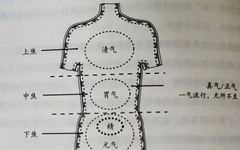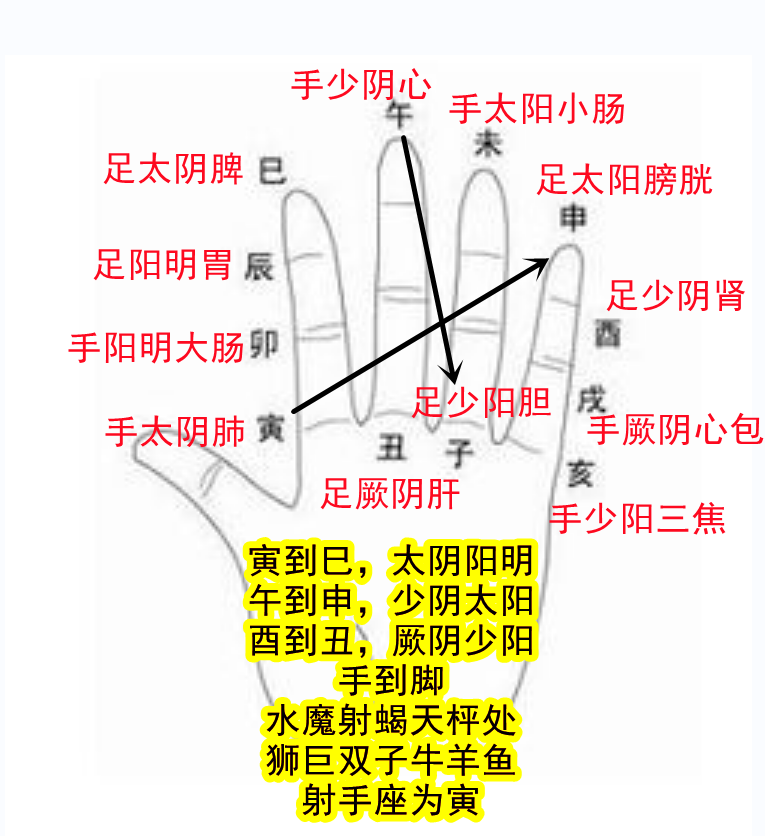
The flow sequence of the twelve meridians starts from the Middle Jiao, beginning with the Lung (Shou Taiyin Fei) and ending with the Liver (Gan), then returning from the Liver to the Lung, thus circulating continuously, as indicated by the arrows below:
Starting from the Middle Jiao, from the Hand Taiyin Lung (Yin) → Hand Yangming Large Intestine (Mao) → Foot Yangming Stomach (Chen) → Foot Taiyin Spleen (Si) → Hand Shaoyin Heart (Wu) → Hand Taiyang Small Intestine (Wei) → Foot Taiyang Bladder (Shen) → Foot Shaoyin Kidney (You) → Hand Jueyin Pericardium (Xu) → Hand Shaoyang Sanjiao (Hai) → Foot Shaoyang Gallbladder (Zi) → Foot Jueyin Liver (Chou) → Hand Taiyin Lung. This flow sequence represents the circulation of Qi and blood in the twelve meridians, continuously nourishing all parts of the body.
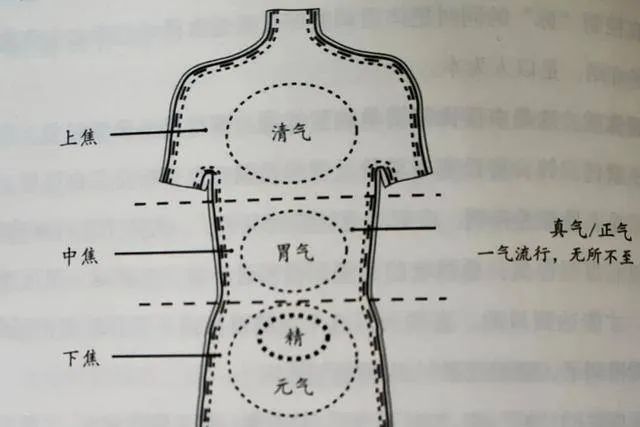
The Middle Jiao is one of the three Jiao (Jiaos) in the human body, mainly responsible for the transportation and transformation of food and fluids to generate Qi and blood. The three Jiaos are the Upper Jiao, Middle Jiao, and Lower Jiao, where Jiao refers to the major organs of the body. The Upper Jiao refers to the organs above the diaphragm, such as the Heart (Xin) and Lungs (Fei).
The Middle Jiao refers to the organs below the diaphragm and above the navel, such as the Liver (Gan), Gallbladder (Dan), Spleen, and Stomach, mainly referring to the Spleen and Stomach. The organs below the navel are considered the Lower Jiao, including the Large Intestine (Da Chang), Small Intestine (Xiao Chang), Kidneys (Shen), and Bladder (Pang Guang).
The function of the three Jiaos encompasses all the functions of the five Zang and six Fu organs. When the three Jiaos are unobstructed, the vital energy of the major organs flows freely, leading to a relatively healthy state of the body.
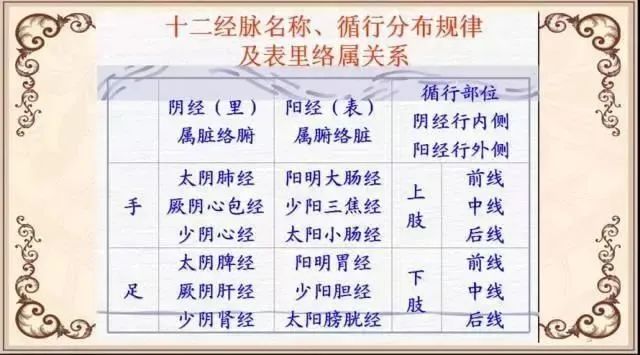
The relationship between the Zang and Fu organs is:
The Heart (Xin) and Small Intestine (Xiao Chang) are interrelated; the Liver (Gan) and Gallbladder (Dan) are interrelated;
The Spleen (Pi) and Stomach (Wei) are interrelated; the Lungs (Fei) and Large Intestine (Da Chang) are interrelated;
The Kidneys (Shen) and Bladder (Pang Guang) are interrelated; the Pericardium (Xin Bao) and Sanjiao (San Jiao) are interrelated.
The meridians are crucial for determining life and death, addressing various diseases, and regulating deficiency and excess; they must remain unobstructed!
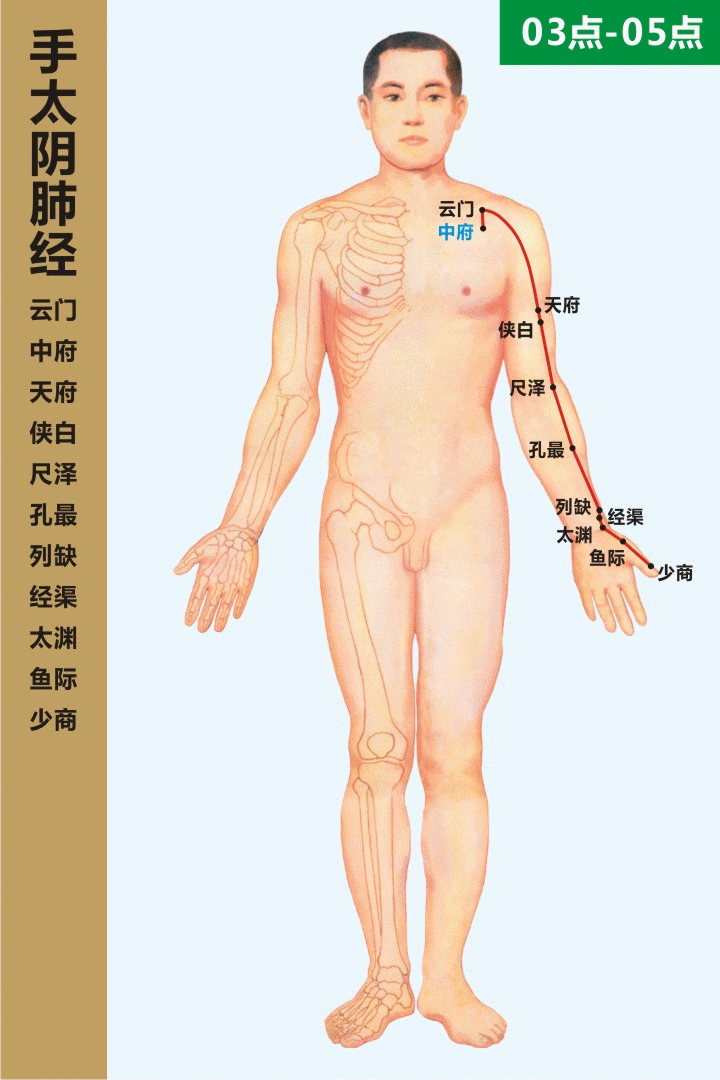
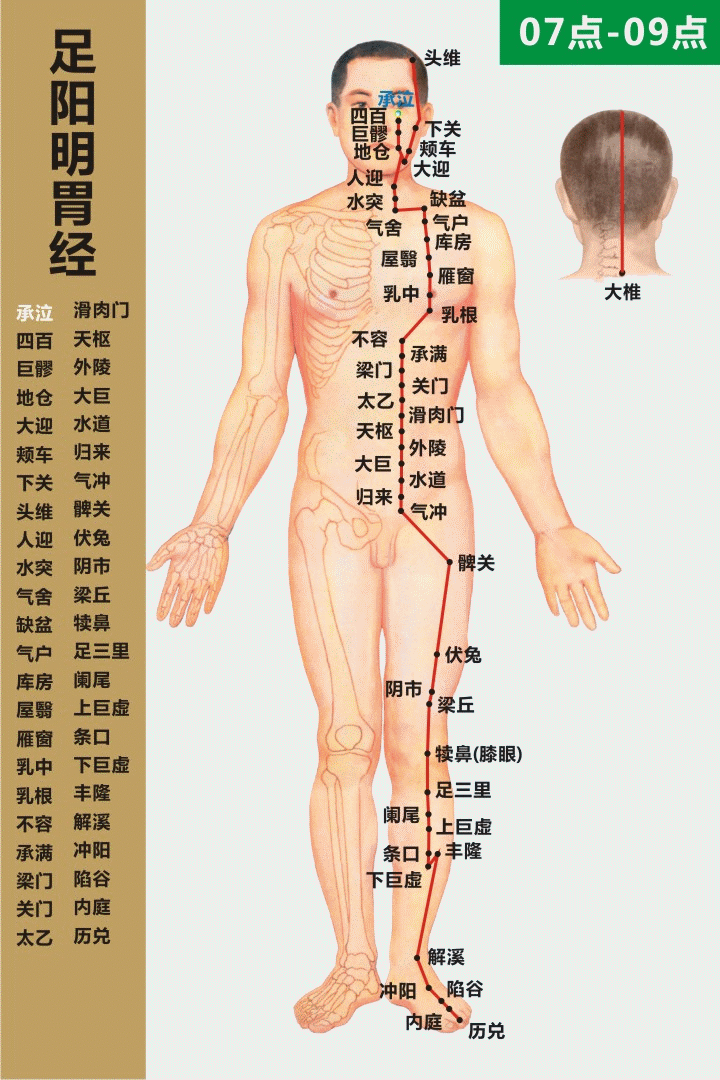
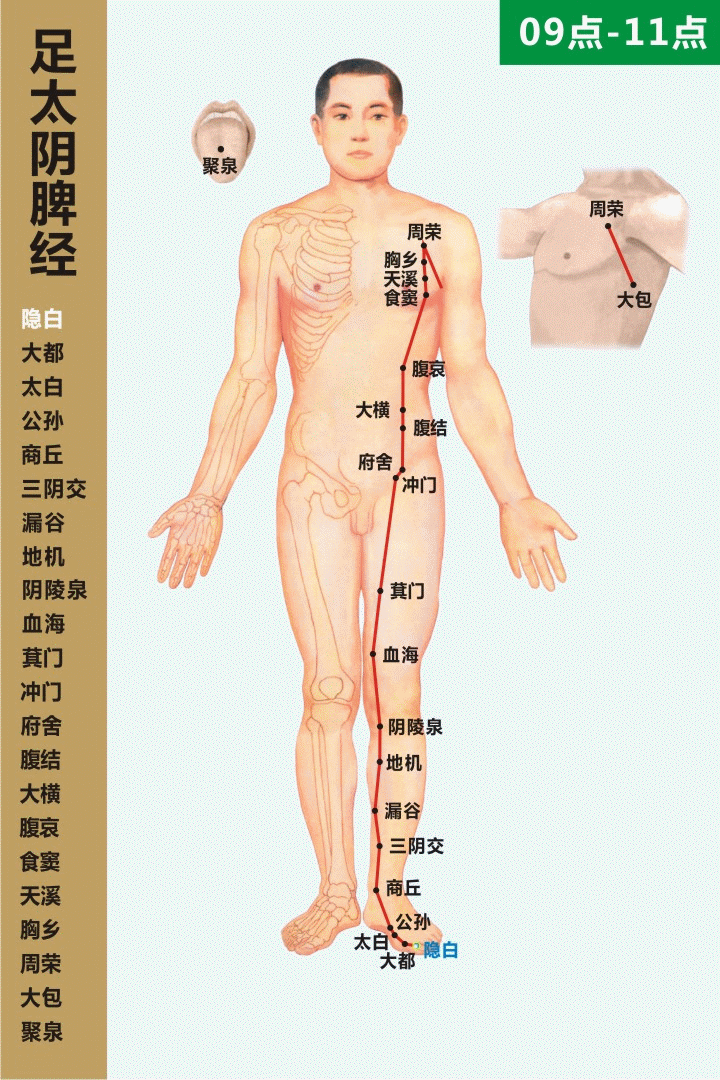

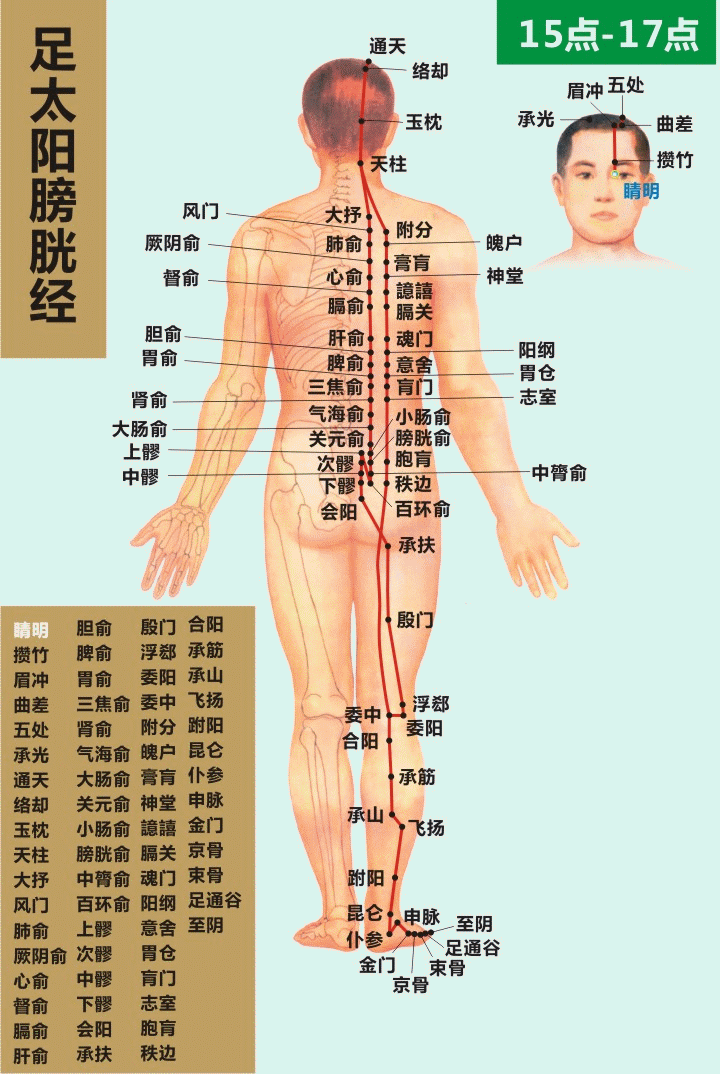
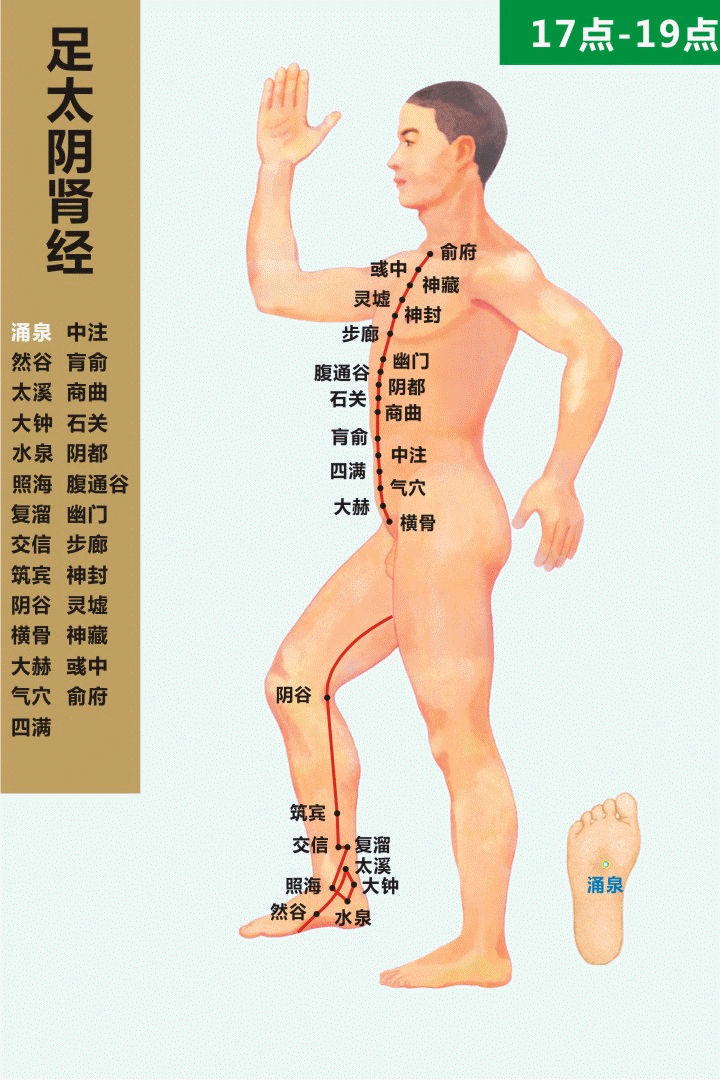
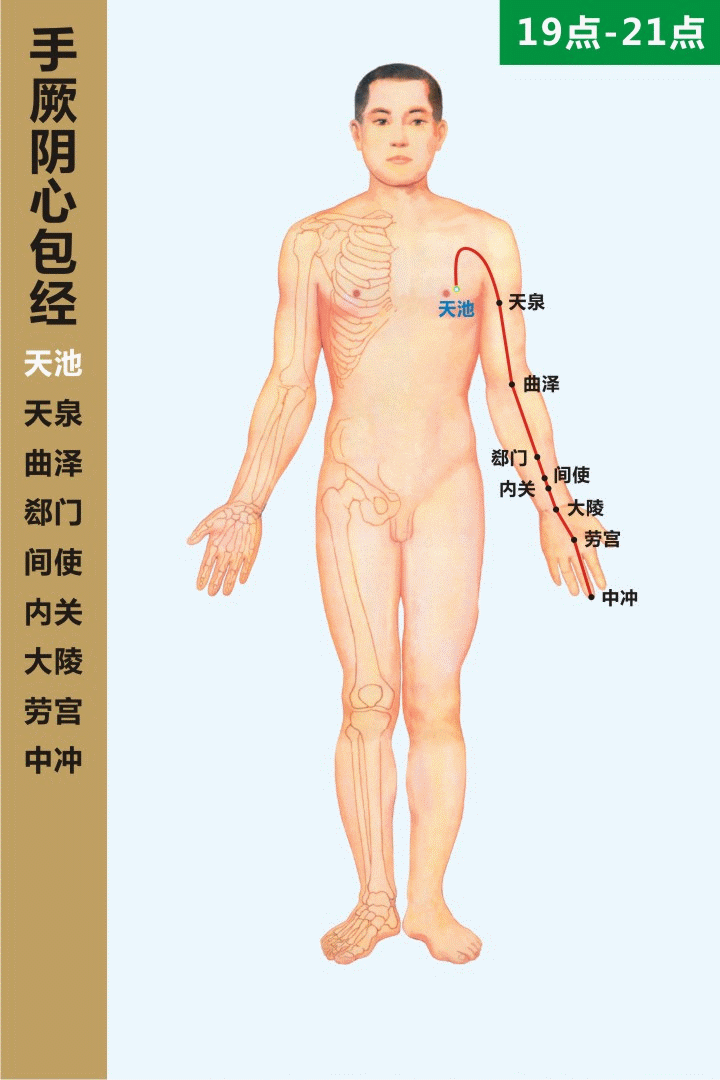
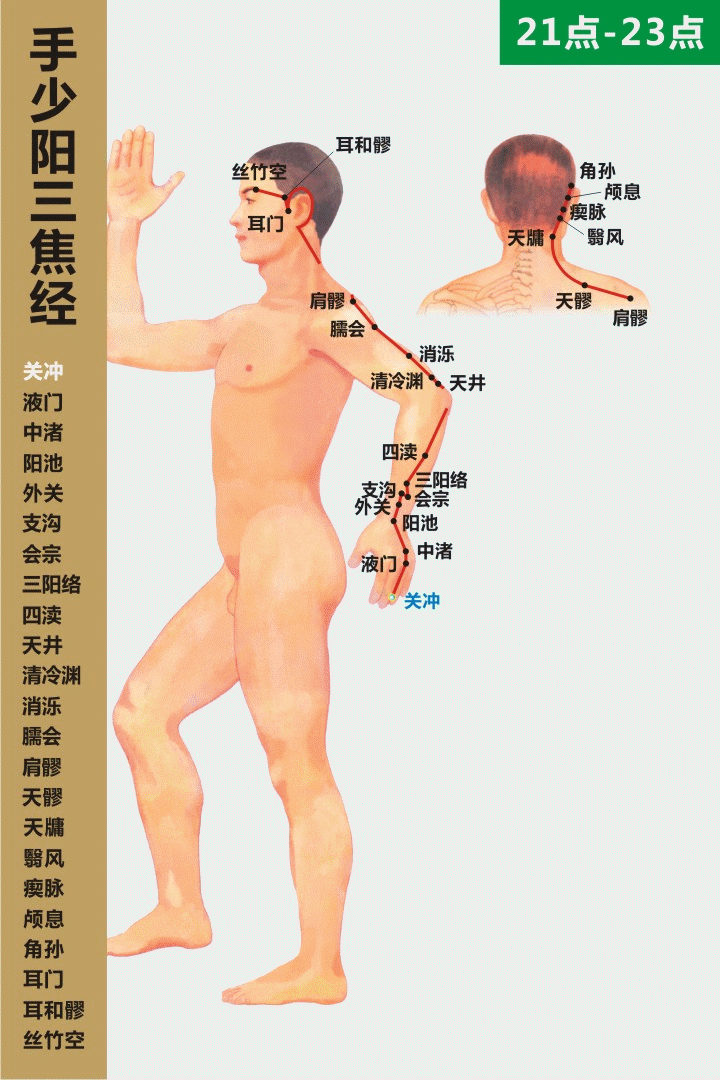
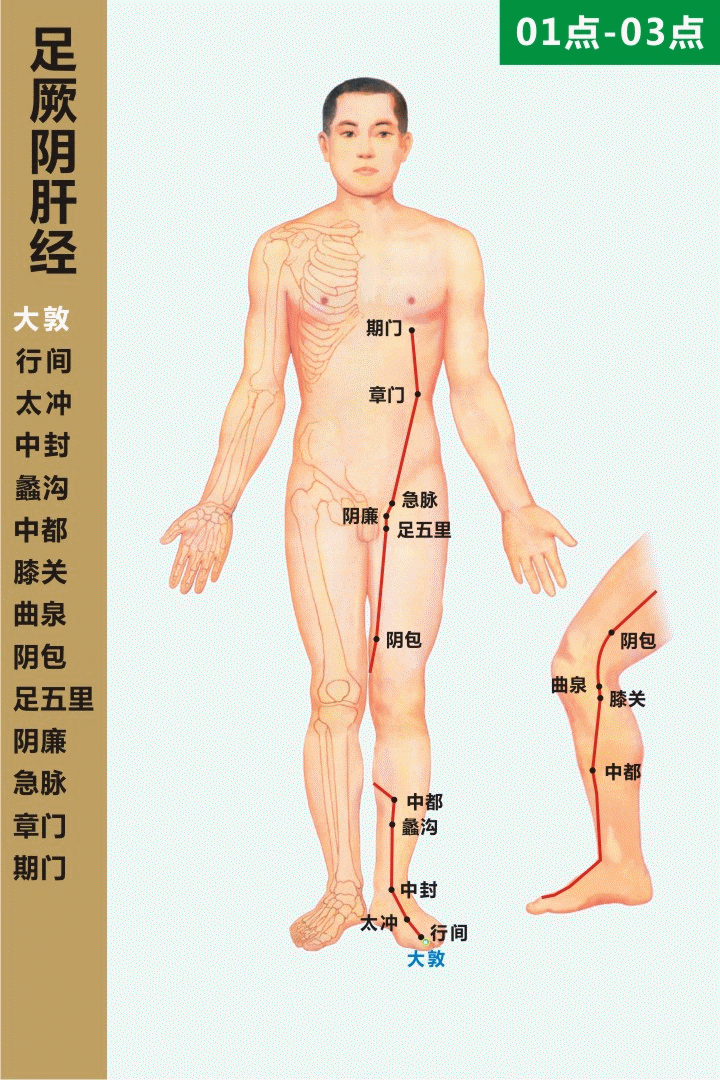
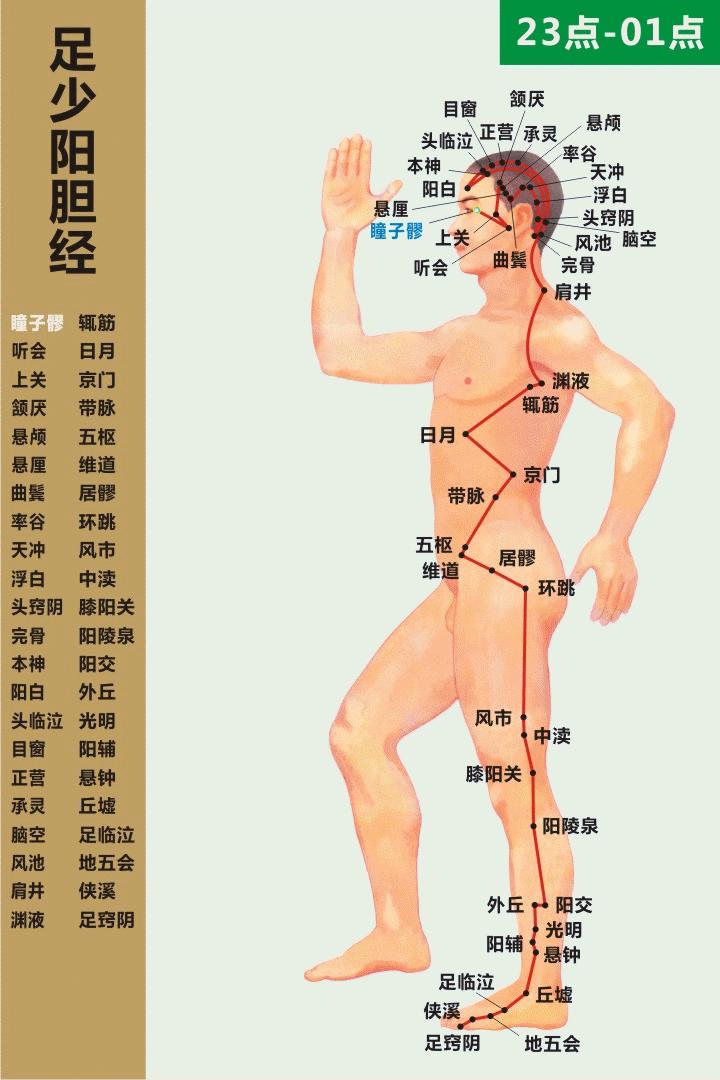
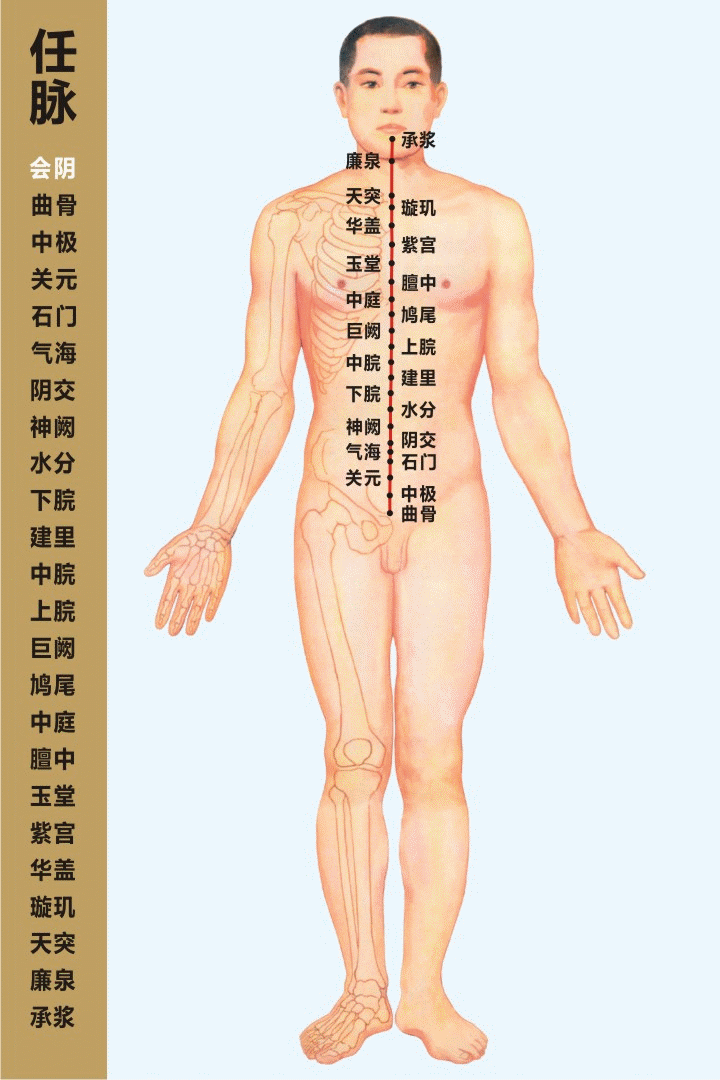
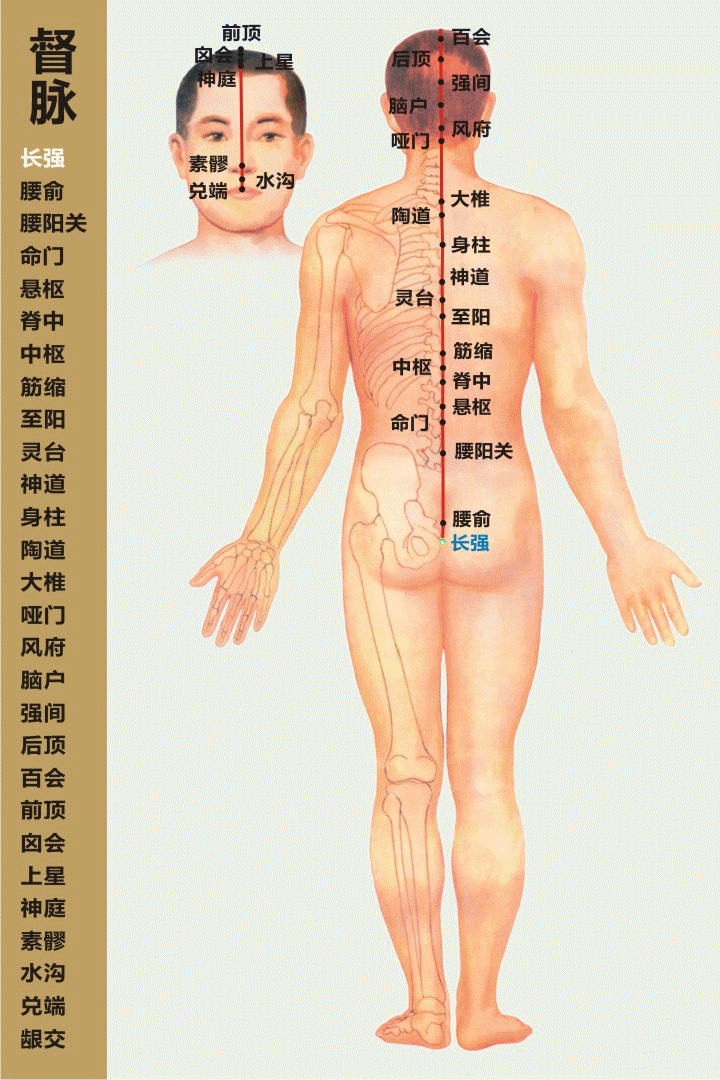
Yin corresponds to the Lung, Hand Taiyin Lung Meridian, Mao corresponds to the Large Intestine, Hand Yangming Large Intestine Meridian; Chen corresponds to the Stomach, Foot Yangming Stomach Meridian; Si corresponds to the Spleen, Foot Taiyin Spleen Meridian; Wu corresponds to the Heart, Hand Shaoyin Heart Meridian, Wei corresponds to the Small Intestine, Hand Taiyang Small Intestine Meridian; Shen corresponds to the Bladder, Foot Taiyang Bladder Meridian, You corresponds to the Kidney, Foot Shaoyin Kidney Meridian; Xu corresponds to the Pericardium, Hand Jueyin Pericardium Meridian; Hai corresponds to the Sanjiao, Hand Shaoyang Sanjiao Meridian;
Zi corresponds to the Gallbladder, Foot Shaoyang Gallbladder Meridian; Chou corresponds to the Liver, Foot Jueyin Liver Meridian.
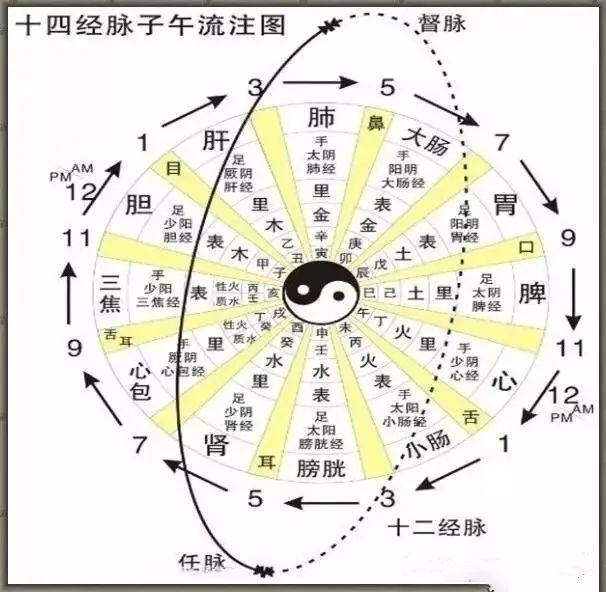
There are a total of five Zang and six Fu organs in the human body. The five Zang organs are: Heart (Xin), Liver (Gan), Spleen (Pi), Lungs (Fei), and Kidneys (Shen); the six Fu organs are the Gallbladder (Dan), Stomach (Wei), Large Intestine (Da Chang), Small Intestine (Xiao Chang), Sanjiao (San Jiao), and Bladder (Pang Guang). The function of the five Zang organs is to store essence and Qi; the main physiological function of the six Fu organs is to receive, digest food, separate clear from turbid, and excrete waste without retention.
The relationship between the five Zang organs and health preservation is as follows: for issues related to tendons, treat the Liver; for issues related to bones, treat the Kidneys; for issues related to muscles, treat the Spleen and Stomach; for issues related to blood vessels, treat the Heart; for issues related to skin and hair, treat the Lungs. The functions of the five Zang organs are: 1. Heart: The Heart is the residence of the Shen (spirit), the master of blood, and the root of the pulse. It belongs to the Fire element; physiological functions: governs blood vessels; governs consciousness; opens to the tongue, connects to the pulse, manifests on the face, associated with joy, and in fluids, corresponds to sweat. The Heart is interrelated with the Small Intestine. 2. Lungs: The Lungs are the residence of the Po (corporeal soul), the master of Qi, belonging to the Metal element; physiological functions: governs Qi, controls respiration; governs diffusion and descent; regulates water pathways; governs the hundred vessels and treats stagnation; assists the Heart in regulating Qi and blood circulation; the Lungs connect to the throat, manifest on the skin, associated with hair, open to the nose, associated with worry, and in fluids, corresponds to mucus. The Lungs are interrelated with the Large Intestine.
3. Spleen: The Spleen is the source of Qi and blood transformation, the foundation of postnatal life, and stores intention, belonging to the Earth element. Physiological functions: governs transportation and transformation; governs the elevation of clear Qi; governs blood regulation; opens to the mouth, connects to the flesh, governs the limbs, manifests on the lips, associated with thought, and in fluids, corresponds to saliva; the Spleen is interrelated with the Stomach. 4. Liver: The Liver is the residence of the Hun (ethereal soul), the storehouse of blood, and the root of tendons, belonging to the Wood element, governs elevation and movement. Physiological functions: governs smooth flow; stores blood; opens to the eyes, connects to the tendons, manifests on the nails, associated with anger, and in fluids, corresponds to tears; the Liver is interrelated with the Gallbladder. 5. Kidneys: The Kidneys are the foundation of pre-natal essence, store will, and the waist is the organ of the Kidneys, belonging to the Water element; physiological functions: store essence, govern growth, development, and reproduction; govern water; govern the reception of Qi; in the body, they correspond to bones, govern bone marrow, manifest on hair, open to the ears and the two Yin (anus and perineum), associated with fear, and in fluids, corresponds to saliva; the Kidneys are interrelated with the Bladder.
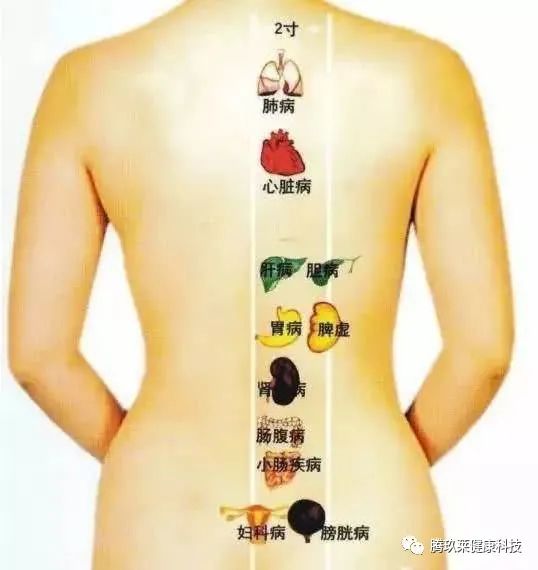
The five Zang organs generate and restrain each other: the Liver generates the Heart, the Heart generates the Spleen, the Spleen generates the Lungs, the Lungs generate the Kidneys, and the Kidneys generate the Liver. The five Zang organs restrain each other: the Liver restrains the Spleen, the Spleen restrains the Kidneys, the Kidneys restrain the Heart, the Heart restrains the Lungs, and the Lungs restrain the Liver. The relationship between the five Zang organs and the five Shen (spirits) is as follows: the five Shen are: Hun, Shenming, Yi, Po, and Zhi. The five Zang organs store: the Liver stores the Hun, the Heart stores the Shenming, the Spleen stores the Yi, the Lungs store the Po, and the Kidneys store the Zhi (“Su Wen. Xuanming Wuqi Pian”). The five Zang organs also generate five emotions: the Heart corresponds to joy, the Liver corresponds to anger, the Spleen corresponds to thought, the Lungs correspond to worry, and the Kidneys correspond to fear. These five emotions develop into the seven emotions: joy, anger, sadness, thought, worry, fear, and shock. The relationship between the five Zang organs and the five fluids is as follows: the five fluids are: tears, sweat, saliva, mucus, and spittle. The “Su Wen Xuanming Wuqi Pian” states, “The five Zang organs transform into five fluids: the Heart corresponds to sweat, the Lungs correspond to mucus, the Liver corresponds to tears, the Spleen corresponds to saliva, and the Kidneys correspond to spittle, which are called the five fluids.” The relationship between the five Zang organs and the five orifices is as follows: the five orifices are: eyes, tongue, mouth, nose, and ears. The Liver opens to the eyes, the Heart opens to the tongue, the Spleen opens to the mouth, the Lungs open to the nose, and the Kidneys open to the ears.
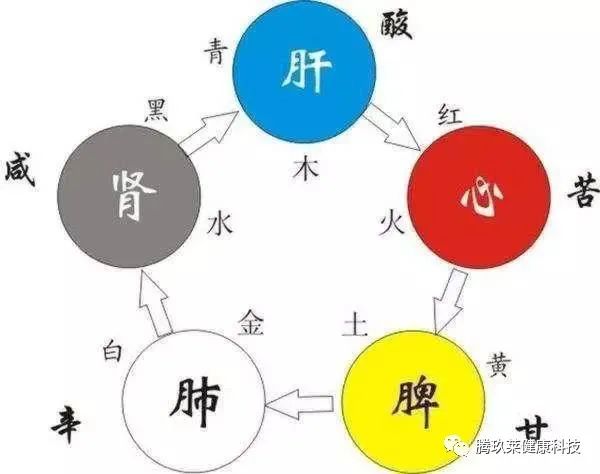
The relationship between the five Zang organs and the five tastes is as follows:
The Liver corresponds to sour (affecting tendons), the Heart corresponds to bitter (affecting blood), the Spleen corresponds to sweet (affecting flesh), the Lungs correspond to spicy (affecting Qi), and the Kidneys correspond to salty (affecting bones). The emotional conflicts are as follows: great anger harms the Liver, great joy harms the Heart, great thought harms the Spleen, excessive worry harms the Lungs, excessive fear harms the Kidneys; anger causes Qi to rise, joy causes Qi to relax, sadness causes Qi to dissipate, fear causes Qi to descend, cold causes Qi to contract, heat causes Qi to leak, shock causes Qi to become chaotic, overwork causes Qi to deplete, thought causes Qi to stagnate; joy overcomes sadness, sadness overcomes anger, anger overcomes thought, thought overcomes fear, and fear overcomes joy. Prolonged viewing harms blood (Heart), prolonged lying harms Qi (Kidneys), prolonged sitting harms flesh (Spleen), prolonged standing harms bones (Lungs), and prolonged walking harms tendons (Liver). The relationship between the six Fu organs and health preservation is as follows: 1. Gallbladder: known as the official of decision-making, governs judgment. Physiological function: stores and excretes bile, the Gallbladder governs decision-making. 2. Stomach: known as the official of storage, when Stomach fire is excessive, hunger is quick, and pain in the upper teeth corresponds to the Stomach meridian, Neiting point; physiological function: receives and digests food, the Stomach descends to harmonize. 3. Small Intestine: the official of receiving and processing, absorbs essence; physiological function: governs receiving and transforming substances, separates clear from turbid, “the Small Intestine governs fluids.” 4. Large Intestine: the official of transmission, excretes waste, pain in the lower teeth corresponds to the Large Intestine meridian, Hegu point, and Jiache point; physiological function: transforms waste, the Large Intestine governs fluids. 5. Bladder: the official of storage, governs Qi transformation; physiological function: stores and excretes urine, relying on the Qi transformation function of the Kidneys. 6. Sanjiao: the official of regulation, governs the pathways of water, overseeing the five Zang and six Fu organs and internal and external pathways; physiological function: facilitates the flow of vital energy, oversees Qi mechanisms and transformations, and serves as the pathway for the movement of fluids.
The 32-character mnemonic is: Yin is within Yang, Yang is within Yin; within Yin is Yang, within Yang is Yin; by pressing Yang with Yang, true Yang is revealed; by pressing Yin with Yin, true Yin is revealed.

